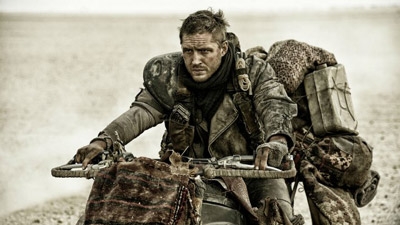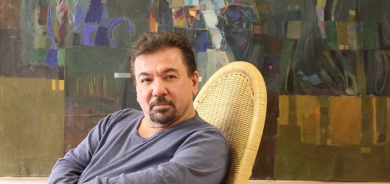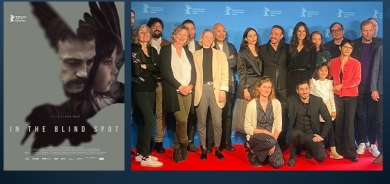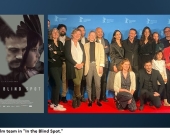Games of thrones, road warriors and badass Aussies jolt Cannes festival

It’s been 36 years since an obscure Australian revenge thriller about a very angry man called Max caused a stir at Cannes’ Marché du film, the world’s largest movie market that runs parallel with the annual film festival. The original Mad Max would go on to be the first installment in a cult trilogy that pioneered a rare blend of punk western and post-apocalyptic biker movie.
That exhilarating cocktail was back in full swing on Thursday for the press screening of “Mad Max: Fury Road”, director George Miller’s stunning reboot of his famous franchise. The surreal plot has barely changed from the earlier movies, set in blighted desert landscapes, except this time water and bullets join oil as the rare commodities everyone is fighting over.
Tom Hardy steps in for Mel Gibson in the role of Max, the interceptor-turned-road warrior who is still haunted by the murder of his partner and child (and other characters he failed to save in the earlier movies). He is up against Immortan Joe (Hugh Keays-Byrne), a wacky warlord who keeps his wretched populace in check by controlling the water supply and farming pregnant women to distribute their precious milk.
The evil chieftain goes berserk early on in the film when his trusted lieutenant, the even angrier Imperator Furiosa (Charlize Theron), absconds with a convoy carrying a precious cargo. He promptly sends his white-painted, shaven-headed “war boys” in hot pursuit. As usual, Max wants to go his own lonely way but ends up teaming with the escaping Furiosa and her unlikely breakaway partners: a group of gorgeous, scantily-clad top models Immortan Joe used as his wives and breeders.
The ensuing non-stop, high-octane road war features ferocious sandstorms, bloodthirsty bike gangs and armoured trucks complete with furiously thumping drummers and a fired-up guitarist blasting out his ear-wrenching sound through a wall of amplifiers. After thirty minutes of pure adrenaline, a brief lull in the action drew thunderous applause from the mesmerized audience. There would be plenty more cheering later on.
When Max and his female companions survive a first gruelling battle, they inevitably go back for another; it makes little sense, but Miller is not really bothered about plot or dialogue. This is all about action and visual overdose. As in previous Mad Max movies, the extravagant decors, costumes and choreography are outstanding, capturing Miller’s wryly humourous vision of a world turned upside down. There is also a hint of jihad in the war boys, who get a kick from launching spectacular kamikaze attacks, confident this will send them straight to the “Gates of Valhalla” (presumably the blissful paradise their warlord has promised them).
Amid all the bombast, Hardy cuts an appropriately sullen and tight-lipped Max. He is more of an action hero than his predecessor, albeit without Gibson’s swagger, mischief and stunning good looks. “Fury Road” sees him share the limelight with Theron’s gritty, one-armed Furiosa. Her prominence, coupled with the appearance of a tribe of aging female amazons, both battle-hardened and hopeful of building a better future (one carries a bag full of seeds she hopes to plant if she ever finds a patch of fertile soil), is perhaps the film’s main novelty. But I wouldn’t rush to call this a feminist movie, as many critics did.
Garrone gets weird in ‘The Tale of Tales’
Similar claims were made after the screening of Matteo Garrone’s “The Tale of Tales”, the Italian director’s third competition entry after "Gomorrah" (2008) and "Reality" (2012), both of which won the Grand Prix award. Loosely based on a seventeenth-century fairy tale collection by Italian poet and courtier Giambattista Basile, the film weaves relatively banal themes and fantastical elements together into three different storylines, one of which involves Mexican actress Salma Hayek devouring a monster's heart with gusto, her face smeared in blood.
"The Tale of Tales” is a major departure from the naturalist style that defined Garrone’s previous work, particularly his savage mob drama “Gomorrah”, which upended the rules of mafia movies. The Italian director is known for his frequent use of amateur actors, notably prison inmates. But his first English-language effort is packed with international stars, including Vincent Cassel, John C. Reilly and Toby Jones. At $14.5 million, it cost a tenth of the “Mad Max” budget but was still far more expensive than anything Garrone has done before – which is one reason he did it in English, hoping to fetch a larger slice of the market.
The Italian helmer said the choice of language also plays to Basile's Shakespearean side, but the effect is often clumsy. Some dialogues are groan-worthy and I suspect a native English director might have noticed that Cassel's serenade from a castle window is frankly embarrassing. The film had been billed as a visual masterpiece but that too left me underwhelmed – though my unfortunate place in a corner of the vast Debussy theatre (smaller than the Grand Théâtre Lumière, but still a 1,000-plus seater) may be to blame.
Midway through the film, this black-comic oddity begins to acquire shape and substance, carried by Toby Jones' marvelous King of Altomonte and the delightful sisters Imma and Dora, played by Shirley Henderson and Hayley Carmichael. The trio feature prominently in the film's superior second half and go a long way towards rescuing the whole enterprise. Jones excels in the role of an eccentric monarch who neglects his daughter in favour of a pet flea, which he spoils and dotes on until it grows into the size of a boar. Imma’s fateful tale of vanity, in which she begs a carpenter to flay her so she may recover her youth, is equally humourous, moving and morbid.
Upon leaving the press screening, I was surprised to hear only enthusiastic comments – particularly from female critics, many of whom hailed a delicate movie “about women”. Garrone said he chose Basile’s tales because of their relevance today. Powerful men addicted to sex and women obsessed with youth and childbirth are indeed commonplace topics– but they hardly make for illuminating, let alone progressive material.
France24















